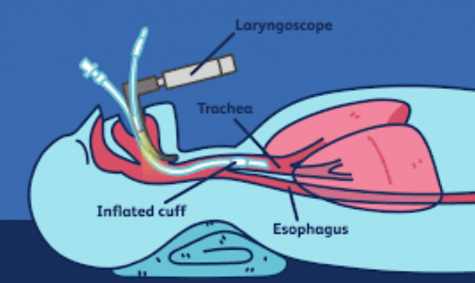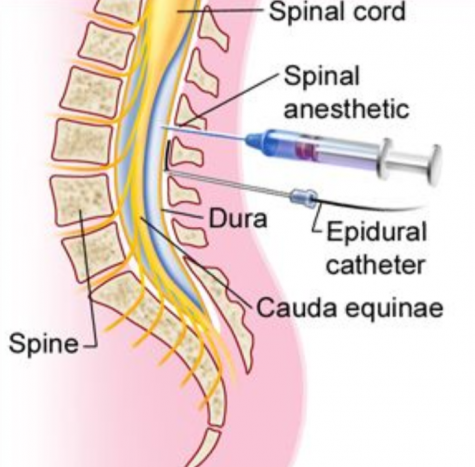What is Anesthesia?
Sawnsurae Vega
September 10, 2019
Anesthesia is used before a patient has surgery primarily to prevent the patient from having pain. There are many types of anesthesia and different ways to administer it. Before the doctor can give any medication they ask the patient a lot of questions. They ask the medical history of the patient, the family medical history, if the patient has any allergies, what medication they are currently taking, when they ate or drank last and a lot more questions to make sure the patient qualifies for the anesthesia medication. Then the doctor decides what type of anesthesia is best for the patient. 
General anesthesia is used for major surgeries. It is used to put the patient to sleep so they don’t feel pain and so they don’t move during the surgery. They also will not remember anything. General anesthesia is a liquid medication that is put in an IV and then the doctor also uses different gases. After the patient is asleep the doctor puts a breathing tube down their airway and hooks them up to a machine that breaths for them during the surgery. It is very important to monitor the patient’s breathing, heart rate and rhythm, and oxygen levels. If the patient starts to wake up the doctor needs to give a little bit more medication to keep them asleep otherwise they will feel the pain and start moving.
Another way to get anesthesia is to have a needle put into the patient’s spine, which is called neuraxial anesthesia. Most people know this type of anesthesia because it’s also called an epidural or a spinal. Pregnant women get these so that they can be numb from the waste down so they don’t feel the pain when pushing out a baby. When they get an  epidural they can’t feel their legs so that means they can’t walk. If the doctor doesn’t put the needle exactly into the right spot the medication can numb the diaphragm. If that happens the patient is not able to breath and the doctor has to replace the epidural into the correct spot in the spine. Other patient’s get needles put into different areas into their body to relieve pain. They are called nerve blocks and they block pain for long periods of time but do not interfere with being able to walk or feel their legs.
epidural they can’t feel their legs so that means they can’t walk. If the doctor doesn’t put the needle exactly into the right spot the medication can numb the diaphragm. If that happens the patient is not able to breath and the doctor has to replace the epidural into the correct spot in the spine. Other patient’s get needles put into different areas into their body to relieve pain. They are called nerve blocks and they block pain for long periods of time but do not interfere with being able to walk or feel their legs.
There is also something called conscious sedation or twilight sleep sedation. The  doctor gives an IV medication that only lasts a short time and the patient can breathe on their own. This medication makes the patient feel sleepy but they are not actually asleep and they usually don’t remember anything. It’s used for quick minor surgeries.
doctor gives an IV medication that only lasts a short time and the patient can breathe on their own. This medication makes the patient feel sleepy but they are not actually asleep and they usually don’t remember anything. It’s used for quick minor surgeries.
It is important to know that anesthesia is very safe for the most part thanks to science and technology today, but complications are always a possibility. People can get a sore throat and tongue from the breathing tube, dizziness, lightheaded, nausea, vomiting, shivering, confusion, delirium, and rarely but most severely malignant hyperthermia. Malignant hyperthermia is a major emergency that causes the patient’s body temperature to rise 1* Celsius every few minutes.  This can cause every organ in the body to shut down. When the body temperature gets too high it can cause brain damage and the patient can actually die. That is why the doctor asks a lot of questions before the surgery to see if there is a family history of this disorder because it is hereditary.
This can cause every organ in the body to shut down. When the body temperature gets too high it can cause brain damage and the patient can actually die. That is why the doctor asks a lot of questions before the surgery to see if there is a family history of this disorder because it is hereditary.











